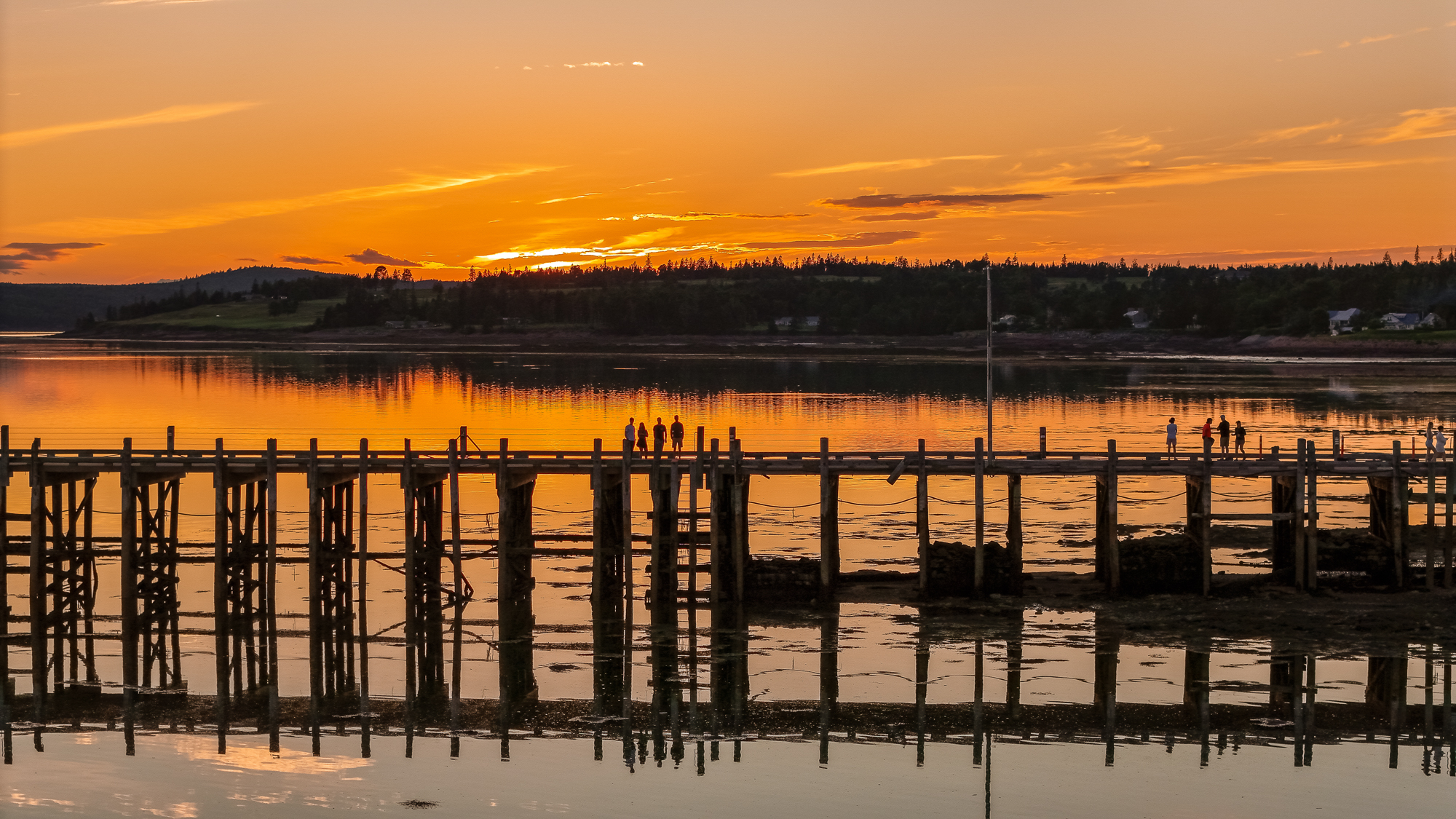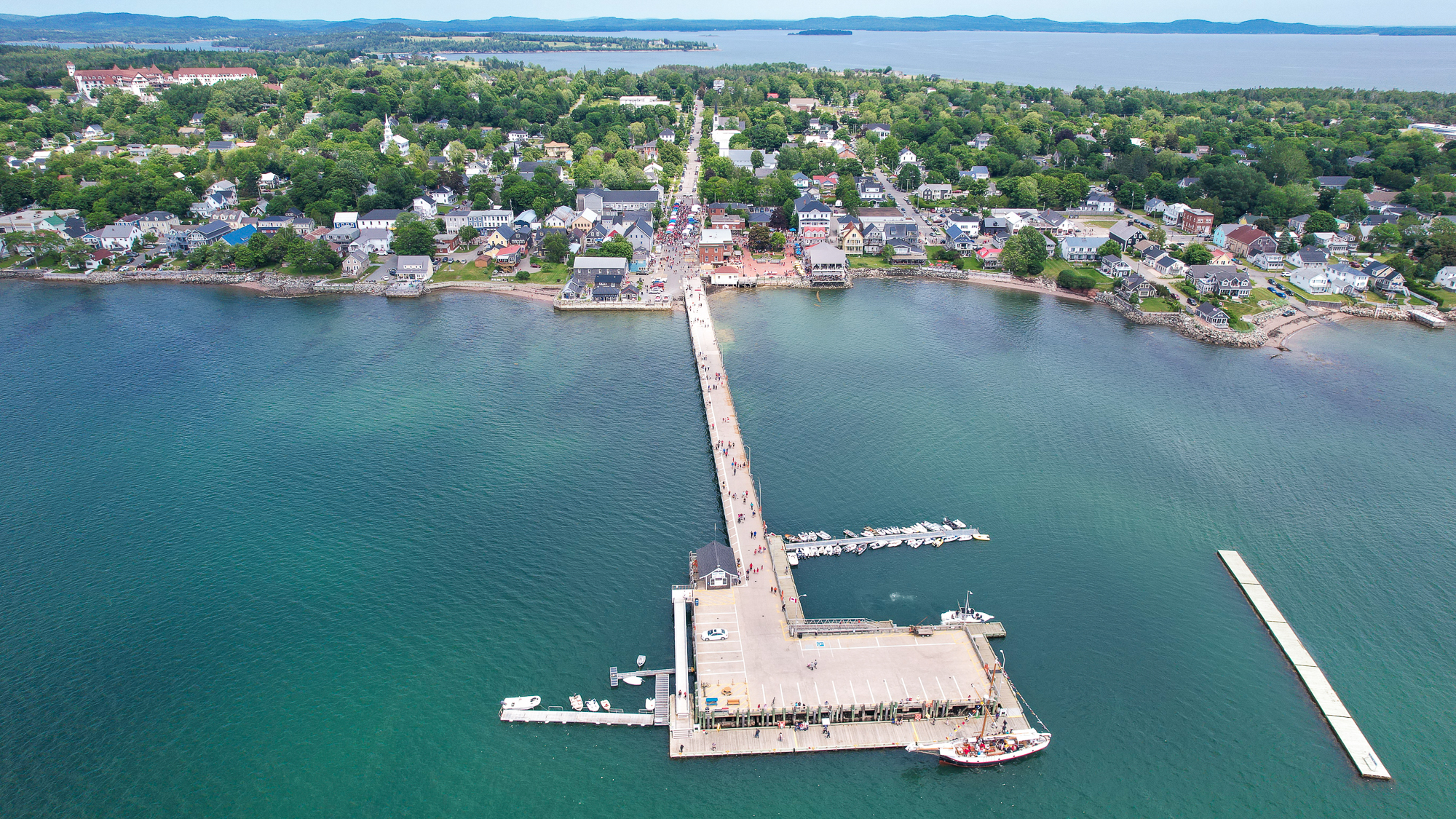Find Out More
The Fight to Save St. Andrews’ Historic Wharf

For generations, the Market Wharf has been more than a working pier, it has been the beating heart of St. Andrews. From the moment you step onto Water Street, the wharf draws the eye straight to the open expanse of Passamaquoddy Bay. The sight of fishing boats at low tide, resting on the ocean floor beside the tall timber pilings, is as much a part of our town’s character as the historic buildings that line our streets. It’s a scene that has welcomed visitors, inspired artists, and reminded locals of our deep connection to the sea.
That connection is now at risk.
The Town of Saint Andrews has approved what it calls the Market Wharf Approach Trestle Replacement and Expansion Project. At first glance, it might sound like a necessary repair, the kind of routine upkeep any aging wharf would need. But the plans tell a very different story. Instead of replacing the open timber pilings with a similar structure, the design calls for filling 4,545 square metres of our tidal harbour with rock and armour stone. The open space beneath the first section of the wharf would vanish, replaced by a solid barrier stretching into the bay.
Supporters of the plan describe it as a hybrid upgrade, part rock infill, part steel pile, and emphasize the expanded space it would add to Market Square. What’s less openly discussed is the cost of that expansion: blocked tidal flow, the loss of natural marine habitat, and the permanent industrialization of the waterfront’s most iconic view.
We have already seen what happens when infill is introduced in this sensitive environment. The nearby areas of smaller infill and armour stone trap seaweed and debris, impact sediment, and redirect storm surge. Neighbouring properties face more flooding and erosion than before. This new project threatens to repeat and magnify those same mistakes.
Marine biologists have raised alarms about the habitat destruction this plan would cause. The mudflats in front of the wharf are not lifeless stretches of muck; they are thriving ecosystems where clams burrow, shorebirds feed, and young fish find shelter. These mudflats cannot simply be “replaced” somewhere else. Once they are buried under tonnes of rock, they are gone for good.
Beyond the environmental toll, there is the question of heritage. St. Andrews is a designated National Historic District, prized for its intact 19th-century charm and unspoiled harbour. Tourists don’t come here to see a modern rock wall jutting into the bay – they come for the view of open pilings and shifting tides, the living history of a working waterfront. Changing that view changes the soul of the town.
The push to move quickly has been tied to grant deadlines rather than an imminent risk to the wharf’s survival. Repairs are needed, no one disputes that, but a full redesign that alters the coastline forever is not the only option. Steel pile-supported structures and traditional timber designs could preserve both the function of the wharf and the character of the waterfront, without burying the harbour under infill.
Perhaps most troubling is how this decision has been made. There has been no independent review from marine habitat specialists, no long-term plan for the wharf and market square’s future repairs and use, and no meaningful public consultation that truly compares all repair options, and their impacts, side by side. The community deserves the chance to choose a solution that serves everyone, not just a design driven by grant conditions and the desire of some to have a larger market square.
Once the rock is in place, there is no going back. The tides will change. The shoreline will change. And the St. Andrews waterfront, as we know it, will change. We stand at a crossroads between preserving what makes our town unique and allowing it to be altered for good.
This fight is not about stopping repairs; it’s about making sure they’re done right. Our wharf can be safe, stable, and storm-ready without sacrificing the natural beauty, historic character, and marine life that define St. Andrews.
